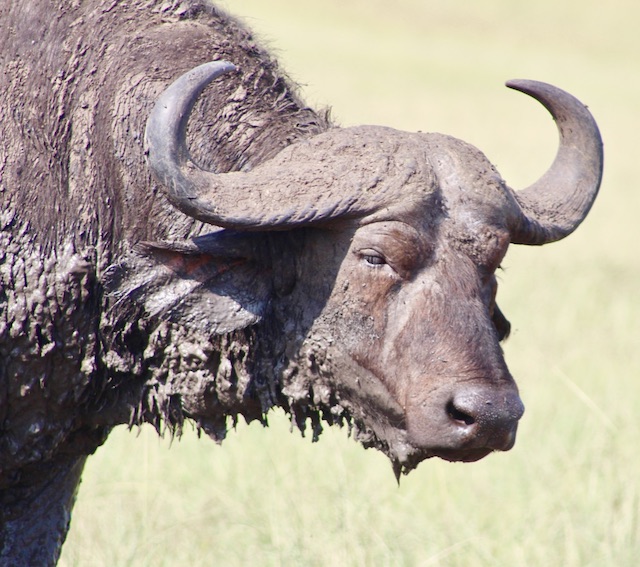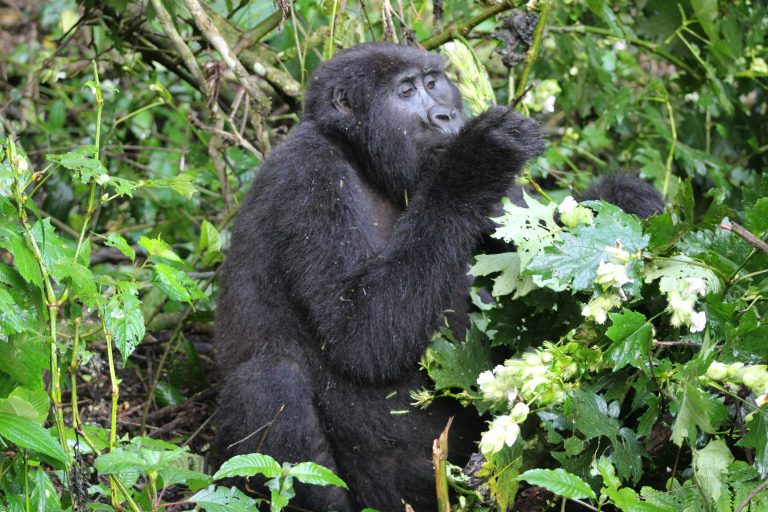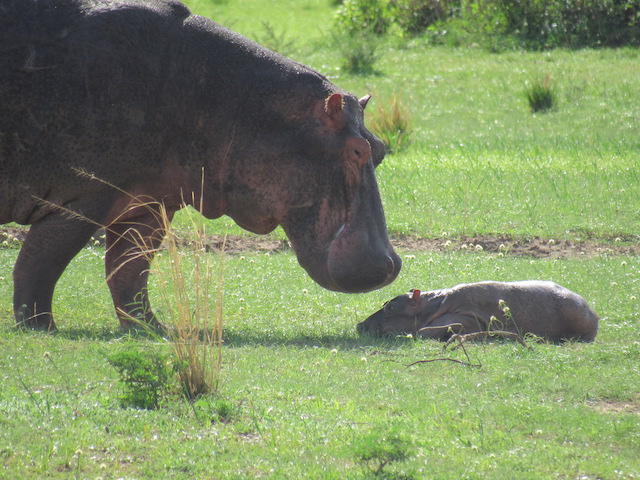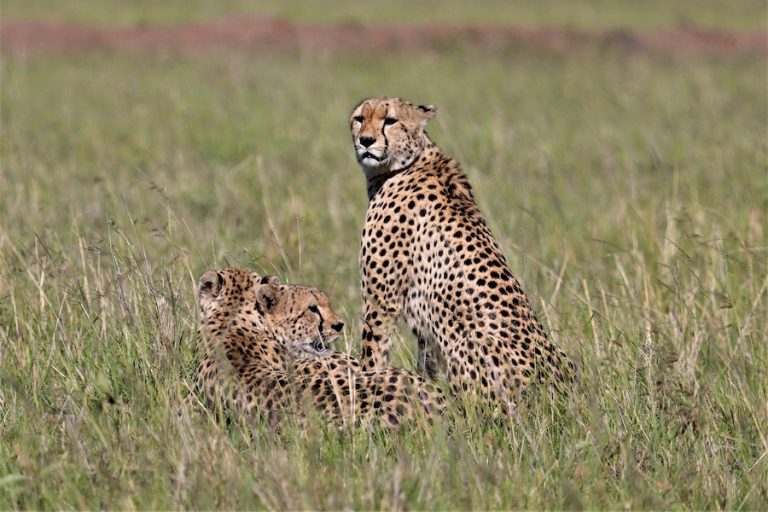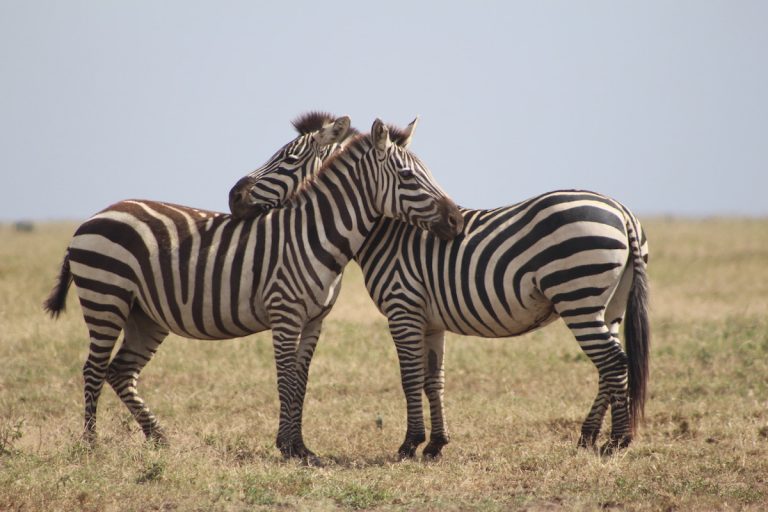The Great Migration in Serengeti National Park
The Great Migration in Serengeti National Park is arguably the world’s greatest herd migration of animals and one of the most interesting wildlife spectacles to encounter on a Tanzania safari. The migration involves the movement of over 1.5 million wildebeest and 300,000 zebras, as well as topi, gazelles, and other ungulates in a continuous cycle across the Serengeti-Mara ecosystem in search of nourishing grass and water. Every year, each wildebeest will travel about 800 to 1,000 kilometers along age-old migration pathways in search of lush pastures and fresh water. Meanwhile, hungry predators including lions, leopards, hyenas, cheetahs, wild dogs, and crocodiles ensure that only the strongest survive in this natural display renowned as ‘the greatest show on Earth.’
About Serengeti National Park
Established in 1940, Serengeti National Park is a sizable national park that occupies the northern Simiyu regions of Tanzania and stretches further into eastern Mara. Spanning over 14,763 square kilometers (5,700 square miles), the park protects an attractive landscape of open savannah grassland, plains, woodland, and riverine forest; which inhabit a plethora of wildlife. The word “Serengeti” is derived from the Maasai word “Siringet,” which means “the place where the land runs on forever.”
Besides being home to one of the greatest animal migrations in the world, Serengeti also boasts one of the largest predator populations in Africa of lions, leopards, cheetahs, honey badgers, black-backed jackals, and stripped hyenas, among others. Serengeti National Park is also home to a good population of elephants, buffaloes, African wild dogs, black rhinos, hippos, warthogs, aardwolves, African wildcats, and bat-eared foxes, among many others, as well a range of primates, reptiles, and over 500 recorded bird species.
The Great Migration Throughout the Year
January to March
The spectacle begins around December when the wildebeest begin to congregate in the southern Serengeti plains and then the wildebeest calving season in the Ngorongoro Conservation Area’s – Ndutu area. Because it is shortly after the ‘short’ rainy season, the grass here is lush and great for the young. Over 500,000 calves are believed to be born here within a brief 4 to 6-week period in February and March. The mass calving season brings a slew of predators to the region, all anxious to catch newborn, wobbly-legged calves. This is the best site to catch the beginning of the Great Wildebeest Migration.
April and May
As the plains begin to dry out and the grass gets scarce in the Ngorongoro Area/ southern Serengeti area, the herds begin to migrate around April, seeking better grasses and more reliable water sources. With millions of hooves pounding the soil, they march in a broad circular direction towards the Central Serengeti plains – Seronera area, leaving their now-arid breeding grounds behind. The migratory herds, however, do not migrate in one solid formation; instead, they split up and may be observed throughout a large region of the Serengeti. By May, the herds have spread out across the Central Seronera Valley Area and the Moru Kopjes.
May is also wildebeest mating season, and the fight is strong as male wildebeest rut and strive for female attention and to mark their territories. However, the herds do not always migrate in the same direction. Depending on weather patterns, some herds may continue straight up the Serengeti into the Northern Plains, while others will veer off to the left and proceed towards the Western Corridor and the Grumeti River.
June and July
The dry season begins in June, with huge concentrations of wildebeest in the Western Serengeti and along the southern banks of the Grumeti River. At the Grumeti River, the migrating mammals must overcome the obstacle of traversing a crocodile-infested river – the first of many enthralling river encounters. As July approaches, the animals continue to migrate north along the park’s western perimeter towards the Mara River in the Serengeti North – an even more dangerous barrier. But for the tourists, the Mara River crossings are perhaps among the most thrilling wildlife occurrences during the Great Migration. Tourists can catch these crossings from the beginning of July, at the start of peak season; however, the timing is entirely dependent on the climatic conditions.
August, September, and October
By August, the herds had overcome the obstacle of crossing the Mara River and are now dispersed over the northern Masai Mara, with many remaining in the northern Serengeti – Kogatende area. However, at times when the river is at its full flow, the panic and uncertainty at the crossings, along with predators and surging currents, can result in these mammals dying. Even when the rivers are calm, the predators will still take their toll waiting to attack any wildebeest that make it to the other side. The animals must cross in groups and while some areas have only a few animals, others will have a mass of animals going without stopping for hours.
The major pandemonium has ceased by September or October, and the migratory columns have progressively migrated eastward. However, the wildebeest will encounter the Mara River’s high floods once more as they prepare to cross for the second time on their way south.
November and December
Following the East African brief rains in late October and early November, the animals begin their migration back to the Southern Serengeti, completing this remarkable migration cycle. Meanwhile, another Mara River crossing awaits them as they return to the Northern Serengeti in search of their trusted calving sites. The wildebeest migrate from Kenya towards the Serengeti’s eastern reaches, passing via the Namiri Plains, an area famed for excellent cheetah sightings. They had expanded to the eastern and southern areas by December. And thus, the cycle continues year after year.
What you Need to Know About the Great Migration Serengeti National Park!
Although it is widely thought that the Serengeti wildebeest’s large movements are primarily influenced by their response to the weather, it is not known how these animals choose their routes. These animals are also believed to have the capability to sense and respond to distant lightning and thunderstorms. It’s thought that wildebeests can sense rain from more than 50 kilometers.
The Great Migration is a result of these animals searching for areas with nutritious grasses that are growing, especially during the wet season. Furthermore, these areas serve as safe havens from predators while the animals can still see these from a distance, making this place suitable for calving. The animals migrate from the south to the west to the north and back again in search of greener pastures. Once the pastures dry up, they are forced to move to the western corridor and the northern extension of the ecosystem, which receives the most rainfall but has less nutrient-dense grasses. Nonetheless, the location serves as the animals’ safest haven during the dry season.
Tours and Safaris to the Serengeti National Park will allow one to get a clear view of a pride of lions working together to hunt down a wildebeest, an unforgettable and gratifying experience to witness especially during the Great Migration.
In addition to viewing the great migration, travelers to Serengeti National Park can partake in a variety of other safari activities, game drives, cultural experiences, hot air balloon safaris, bird-watching and more, all of which can be included in Tanzania safaris to the park.
Best Time to witness the Great Migration in Serengeti National Park
Although the Serengeti National Park is open all year round and its wildlife offers the best views at all times, the ideal months to witness the Great Migration in the park are December through February or June through October when the weather is good, if you also want to enjoy a game viewing safari.
Getting to Serengeti National Park
Tourists on Tanzania safaris can get to Serengeti National Park via road and air and the majority of Serengeti safaris depart from Arusha. By road, the journey to Serengeti is around 325 kilometers and will take approximately seven hours. It is quite a long journey, but it’s gorgeous, and you’ll enjoy incredible sightings of some animals along the way.
However, because the journey takes you via the Ngorongoro Conservation Area, a common option is to fly one way and drive the other way, including an overnight stay at the Ngorongoro Crater. The distance from the crater to the Seronera region of the Serengeti is around 140 kilometers – approximately three hours’ drive.
By air, which is also the best way to get to Serengeti, one can fly to Kilimanjaro International Airport (JRO), which is roughly 46 kilometers from Arusha. On the other hand, one can also fly into Julius Nyerere International Airport (DAR), located outside of Dar es Salaam, and then to Arusha Airport (ARK) or Kilimanjaro International Airport (JRO). Arusha has daily operational flights to numerous airstrips within the park.
Safaris to Serengeti National park
12 Days Beautiful Tanzania Safari
8 Days Tanzania Great Migration & Uganda Gorilla Safari

